| 18 September 2016 |
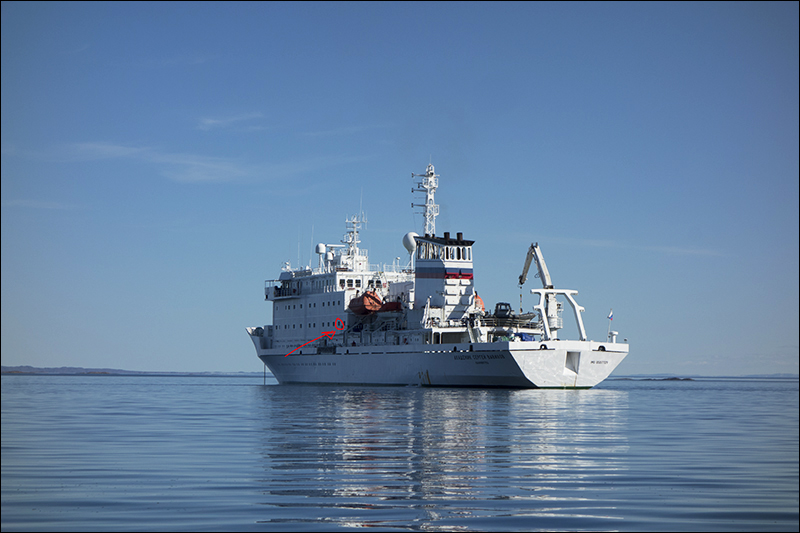 Here is our ship, the Vavilov, a Russian research vessel seconded by One Ocean for their summer trips. I've circled our cabin window. We were only 50 passengers on board and about 100 staff. The food was excellent - you chose from a menu as opposed to a buffet line so I wasn't tempted to pile my plate up three times a day.Having said that, there was a pastry chef on board so there was no hope of not gaining weight. We spent all of our time on the top deck where there was a nice lounge with a wrap around deck. Photo by Mary. 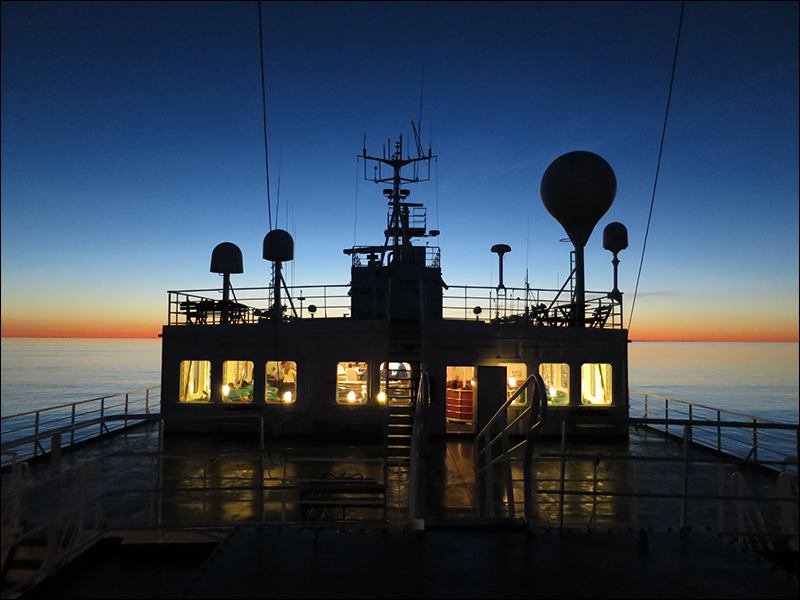 Here is the lounge at night. The photo is by Peter as I didn't stay up this late. Sleep was a problem for me as there were only about 2 hours of night, and even then the skies weren't dark. The scenery never let you rest, either, so different, so stark and abstract. 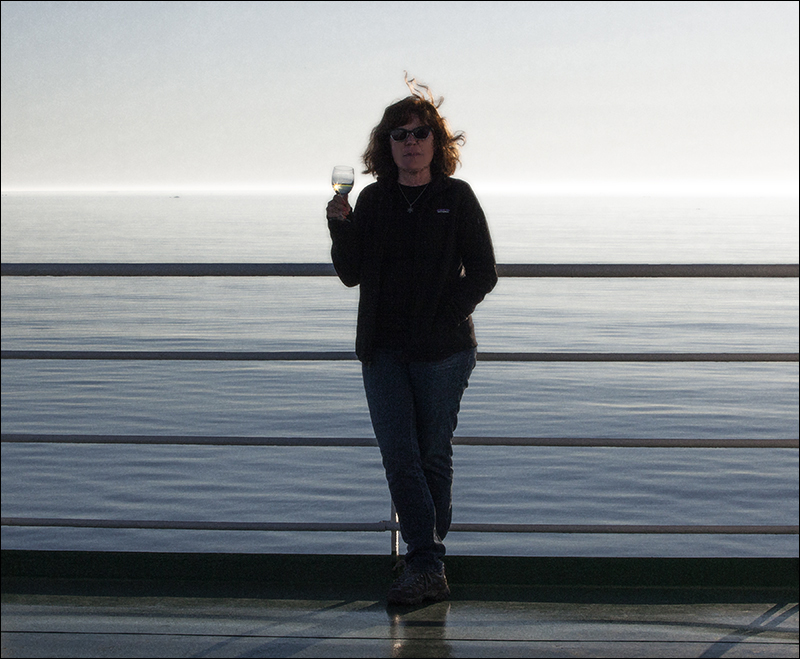 There was a happy hour each day in the lounge. $3 for a glass of wine! 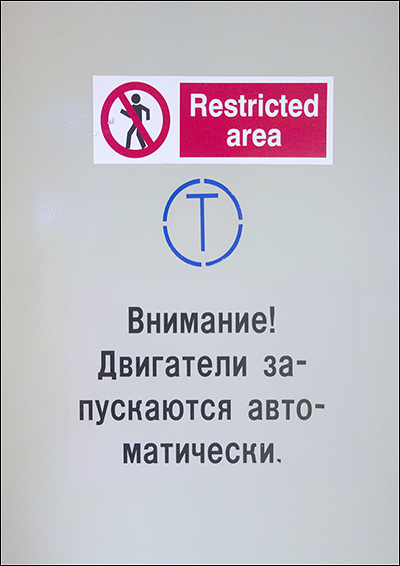 This sign was on the door just across from our cabin. I don't know what those Russians were up to in there, but it can't have been good.  We started off in Iqaluit, formerly Frobisher Bay, and visited the original Hudson's Bay trading post, established 1670. We started off in Iqaluit, formerly Frobisher Bay, and visited the original Hudson's Bay trading post, established 1670.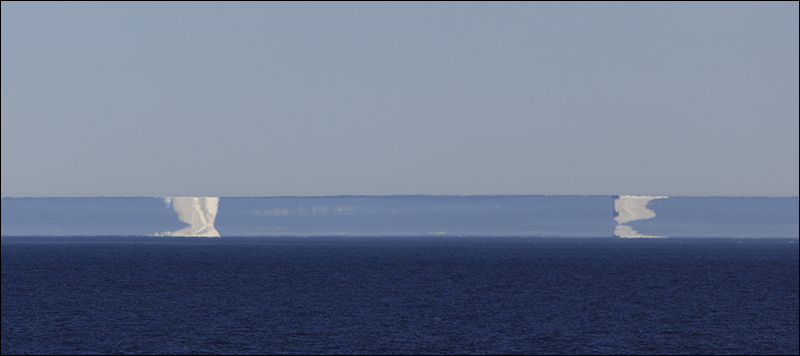 The first several days featured an inversion with this trapped layer of cold air due to the nearby pack ice. These are berg mirages - reflections of distant icebergs on the underside of the cold air layer. 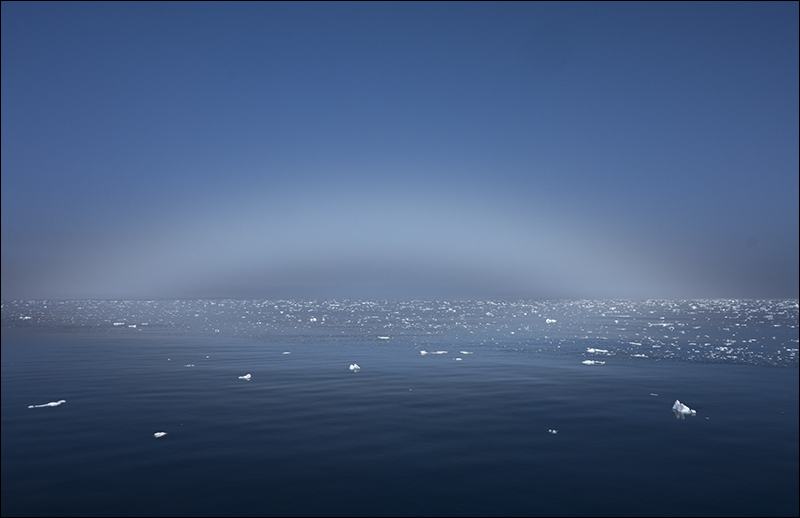 This is part of the same inversion phenomenon. We often traveled through a thin layer of fog. 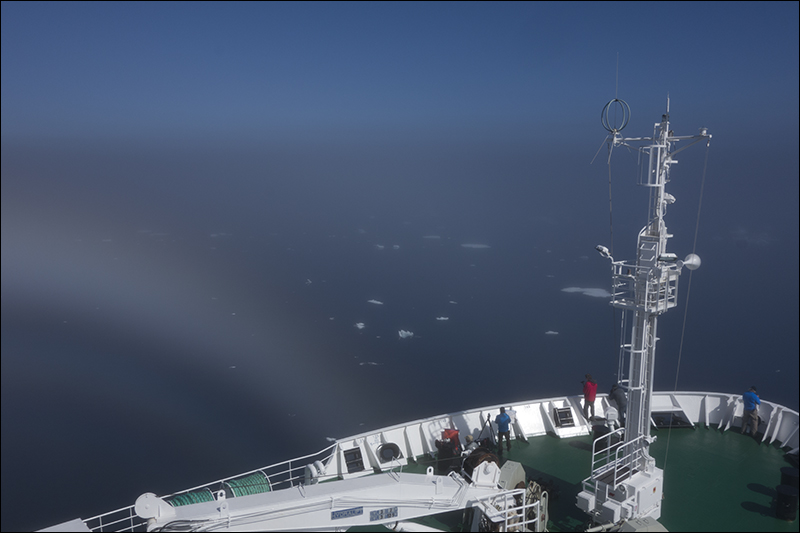 The Vavilov in fog. 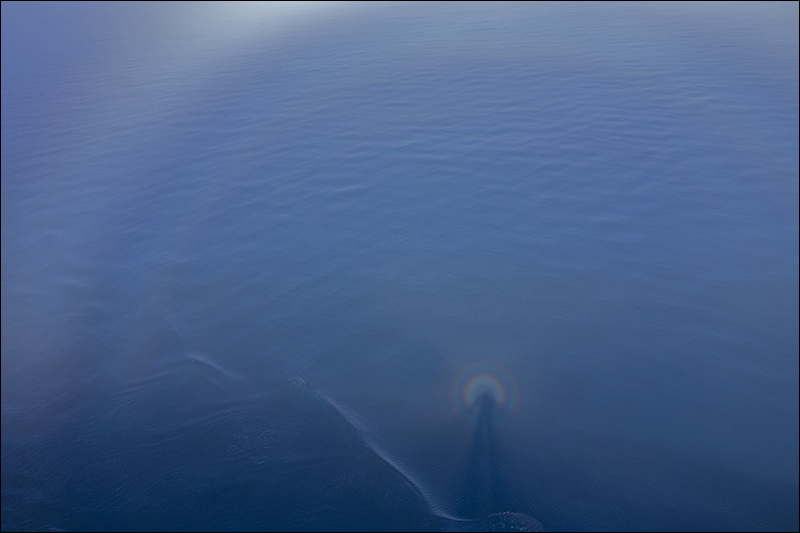 A fog bow! Mary looks down at the water beside the ship with the sun at her back. Photo by Mary. 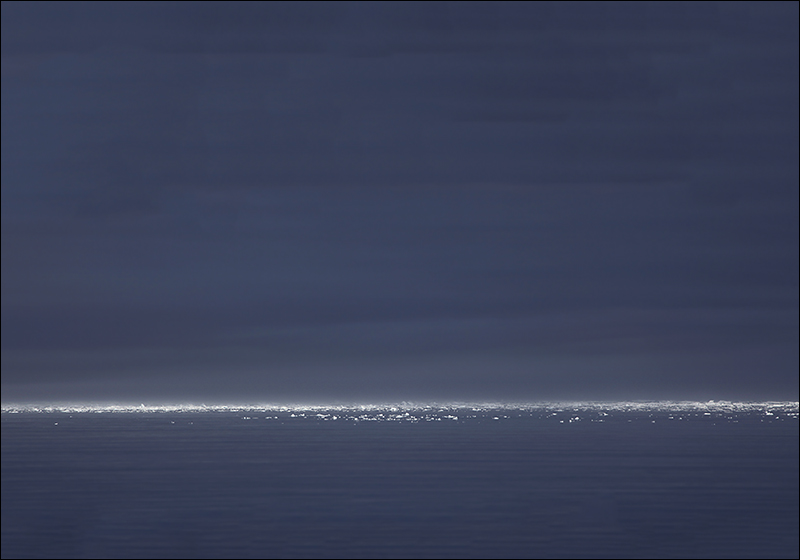 We approach the pack ice. 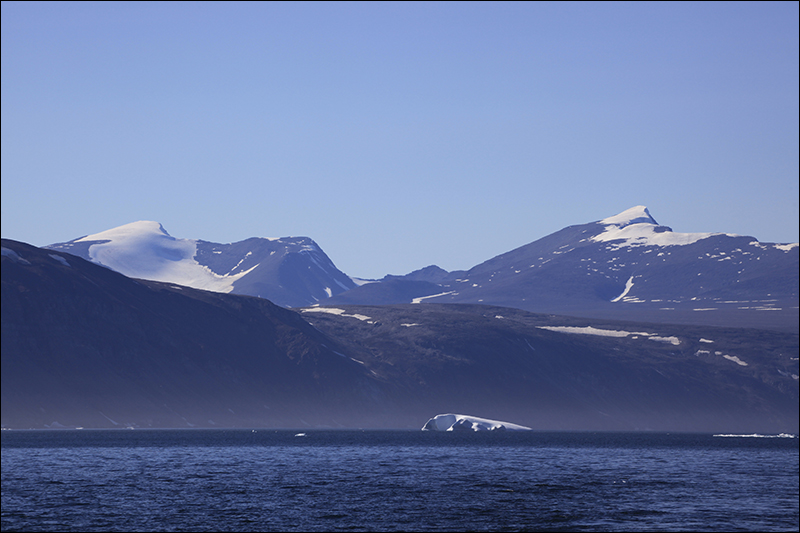 A typical Baffin Island landscape. 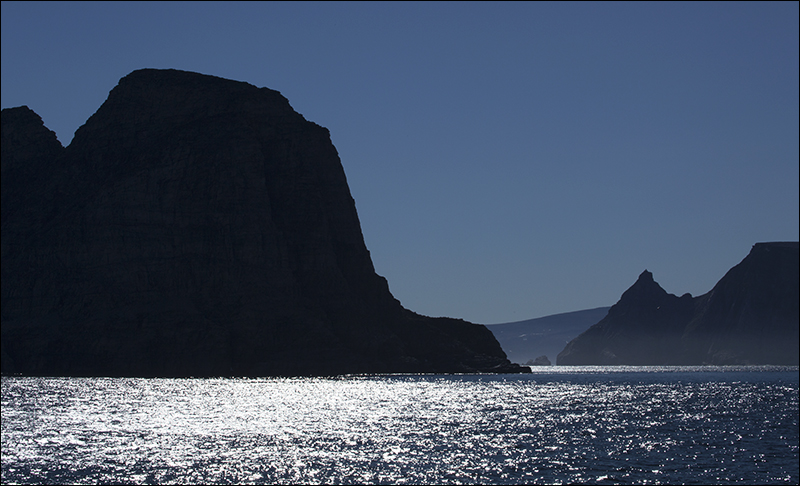 We crossed the Arctic Circle near Sunshine Fjord. We saw several bowhead whales on this day. 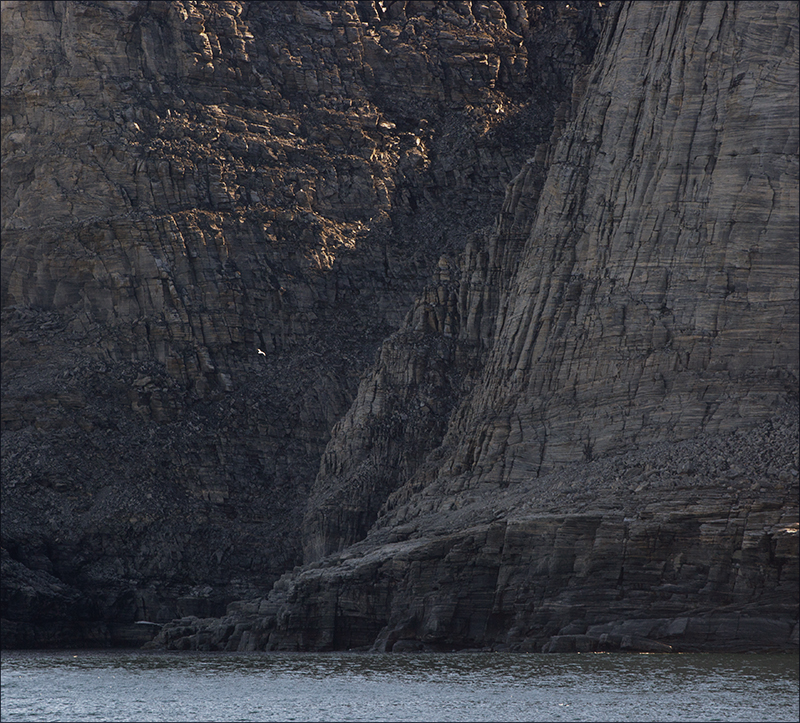 Gull and cliffs. 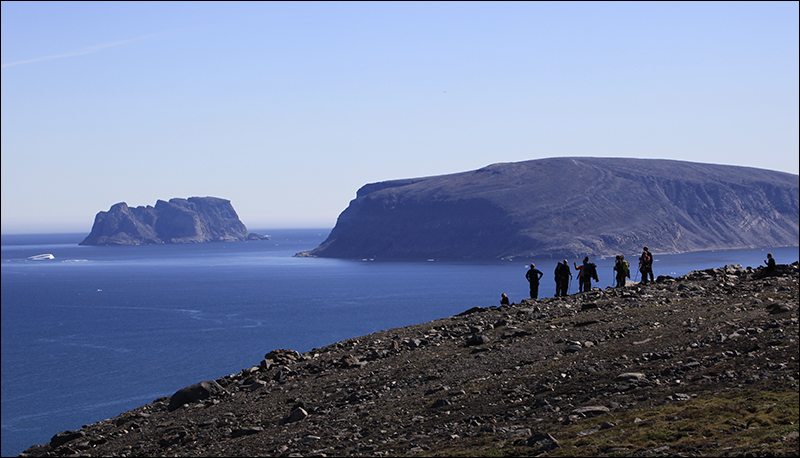 We were supposed to walk across the Arctic Circle this day at Sunshine Fjord, but we came up about 1 km short. 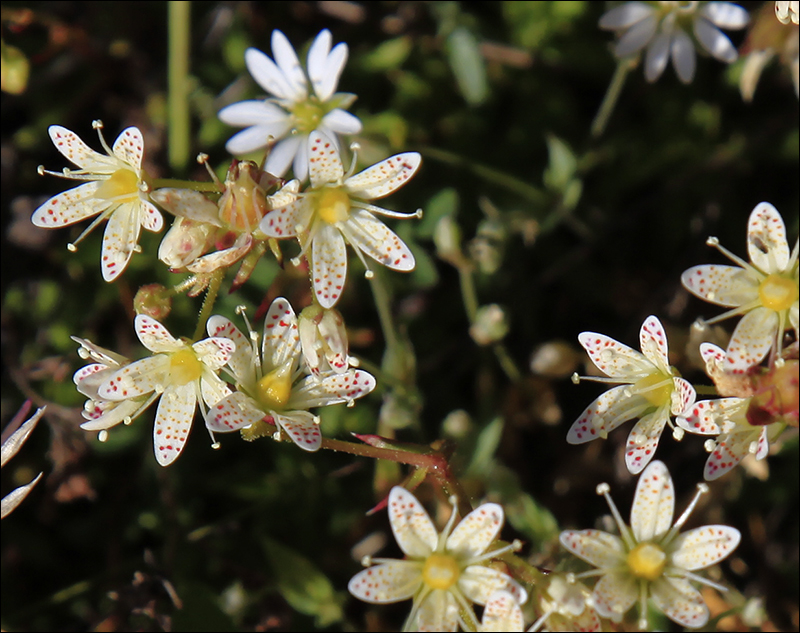 Spotted saxifrage. The flowers of the arctic tundra are almost identical to those of the mountain alpine. I even remembered this flower from our trip to Tsar and it features in that photogallery. 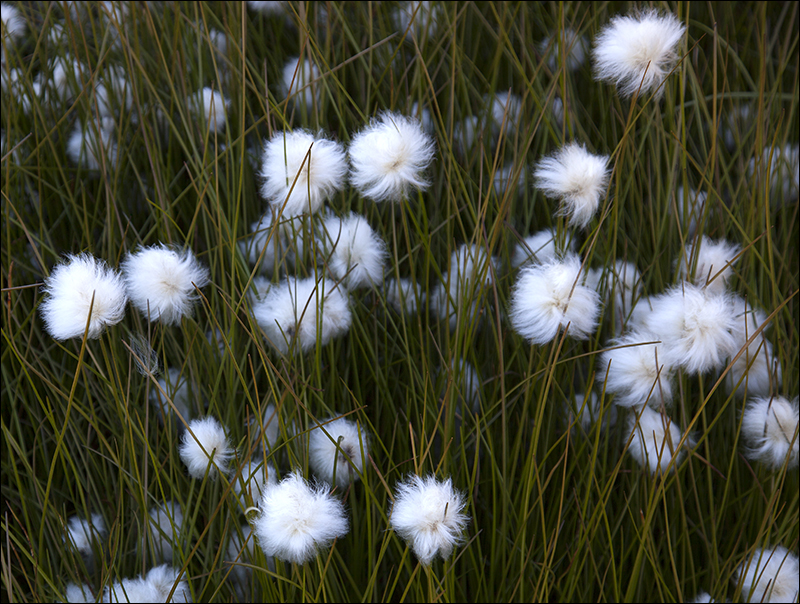 Arctic cottongrass. 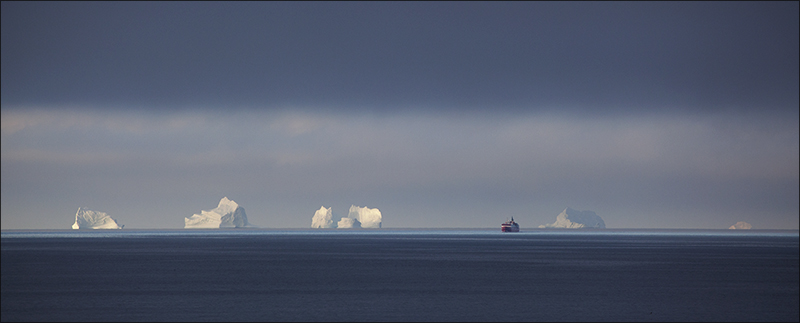 We then crossed Davis Strait and began to see more and more icebergs. This is a large ship, a car ferry that travels the coast of Greenland. 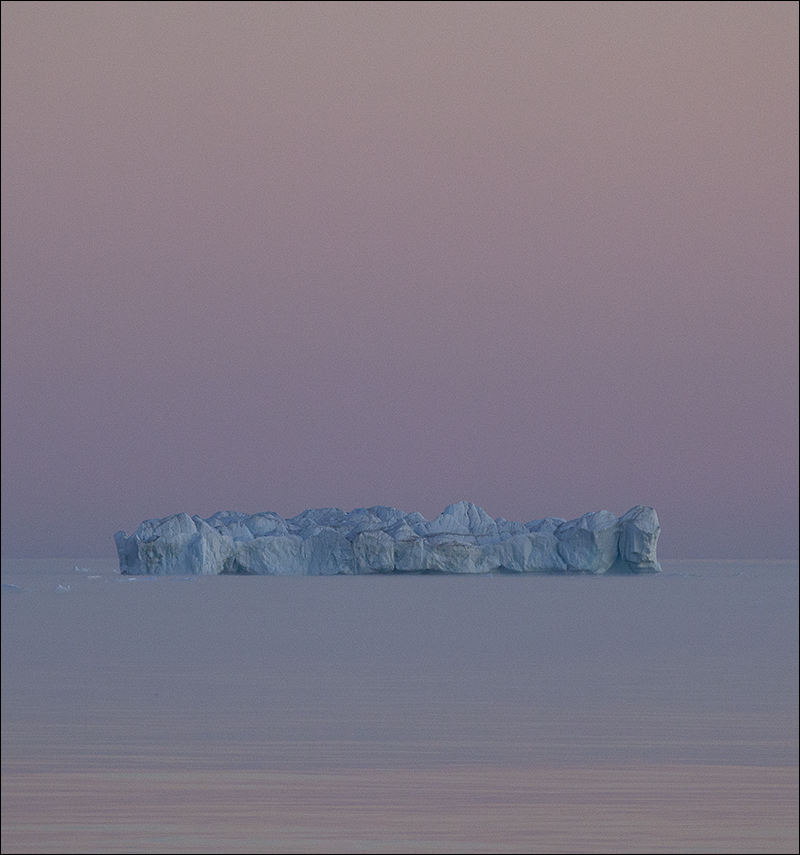 Iceberg at dusk.  We saw lots of Northern Fulmars. 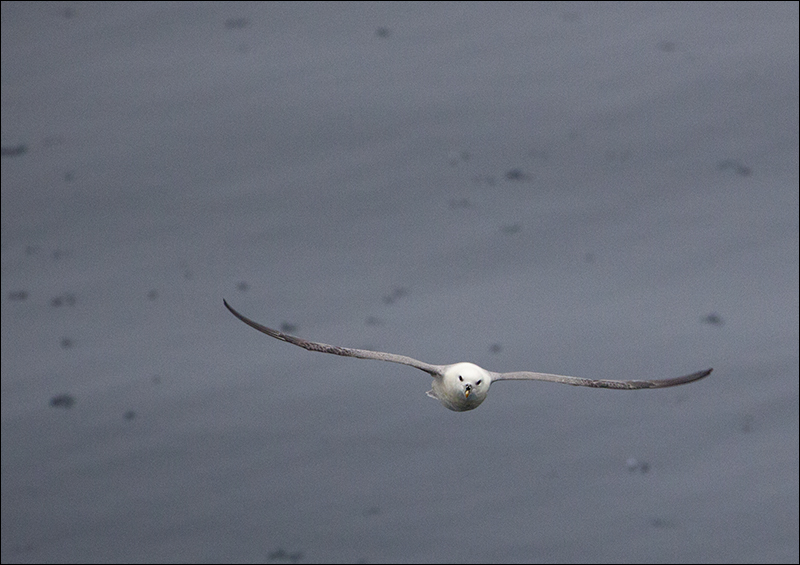 Northern fulmar. 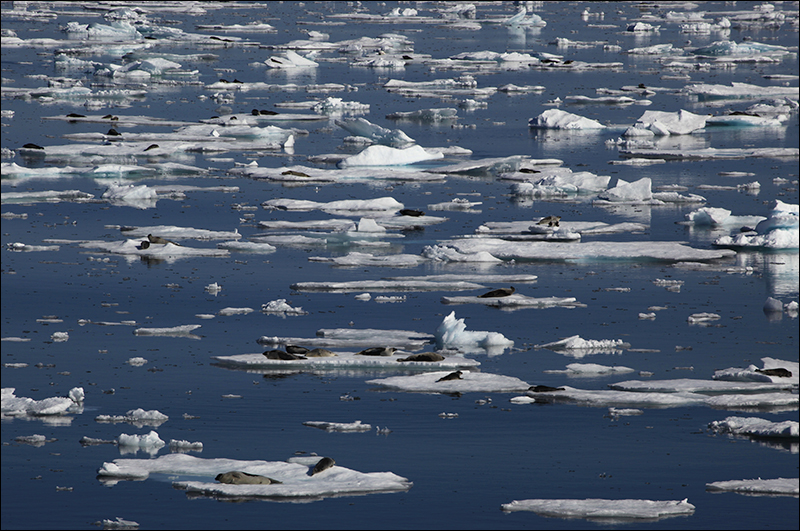 The most unusual wildlife experience we had was on day 5 when we came across a huge group of harp seals. I can't capture the scene for you, but there were seals to the horizon in all directions, we estimated several thousand. The experts on board had never seen anything like it. 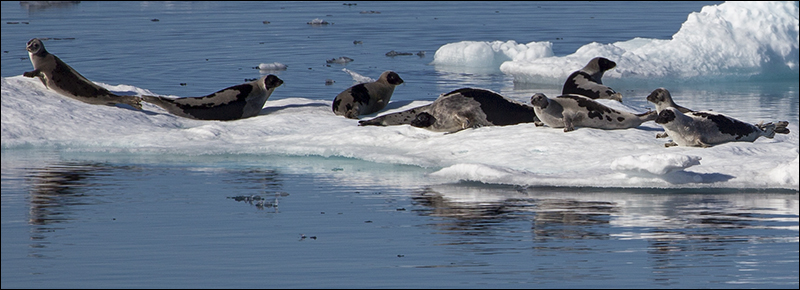 Close up of the harp seals. 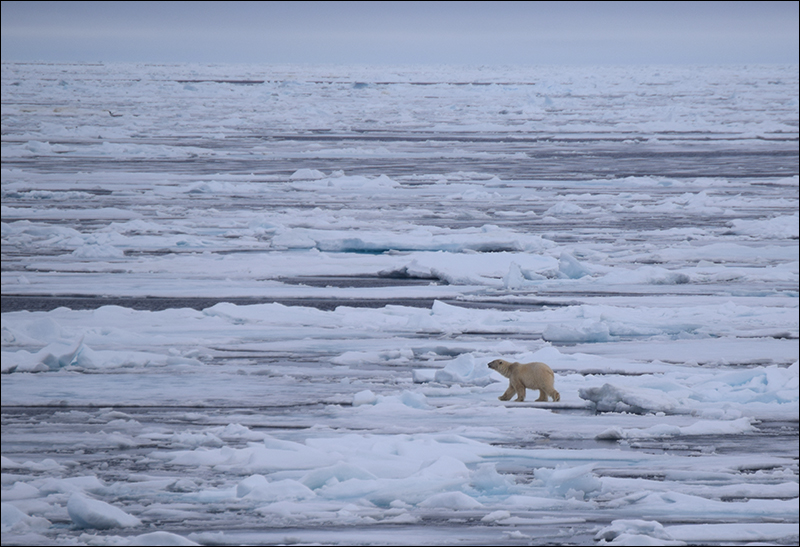 Photo by Nate Small. Nate had his long lens on when we encountered this polar bear and I wanted to use my binoculars. You can get an idea of how they use the pack ice to hunt. He would drop into the water without a thought and with only his head above water you could see how he might sneak up on seals. 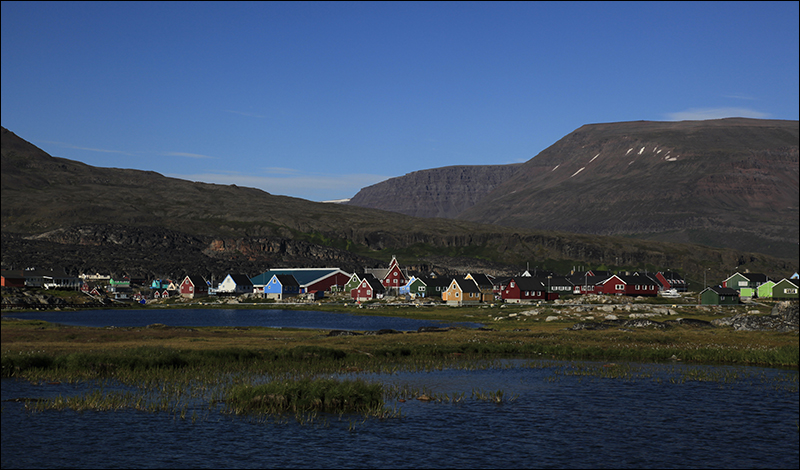 The villages in Greenland were always colorful. This is Qeqertusuaq. 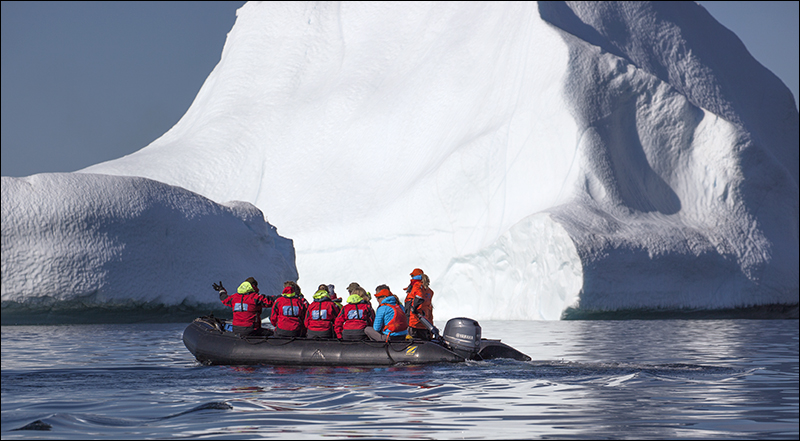 The small size of our group meant we could launch at least once a day in zodiacs to explore the surrounding land and ocean. 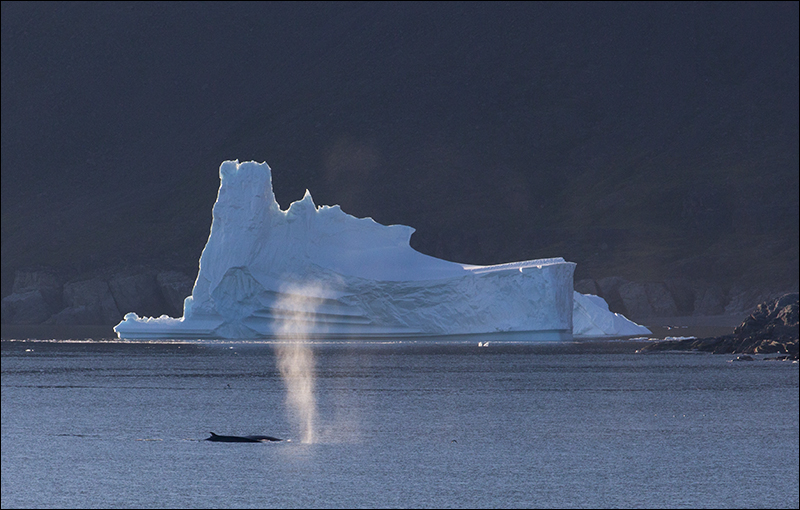 Fin whales and berg. 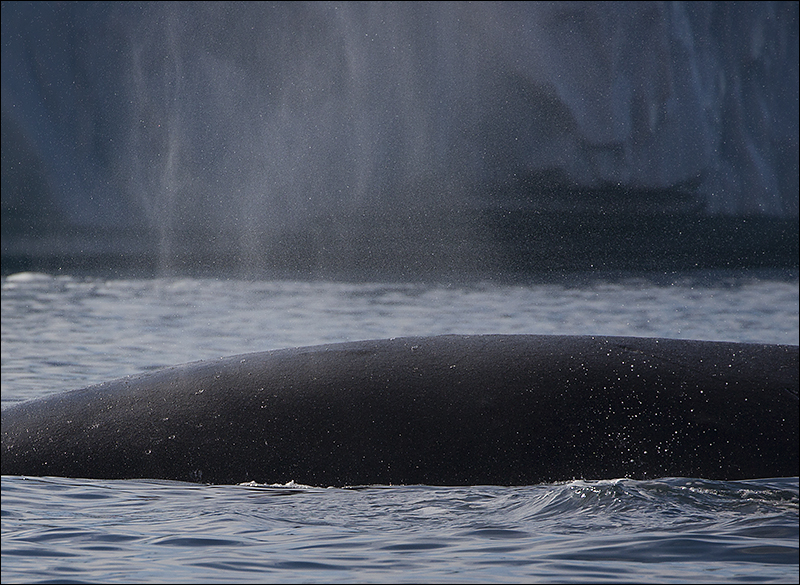 Close up to a humpback.  Humpback whales lunge feeding. 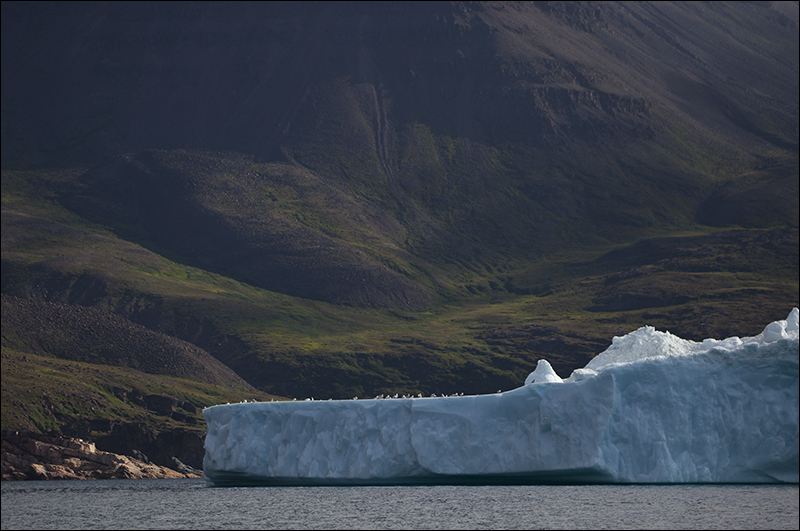 Grounded ice berg and Disko Island.  This was a huge ice berg, I would guess about 20 stories tall. 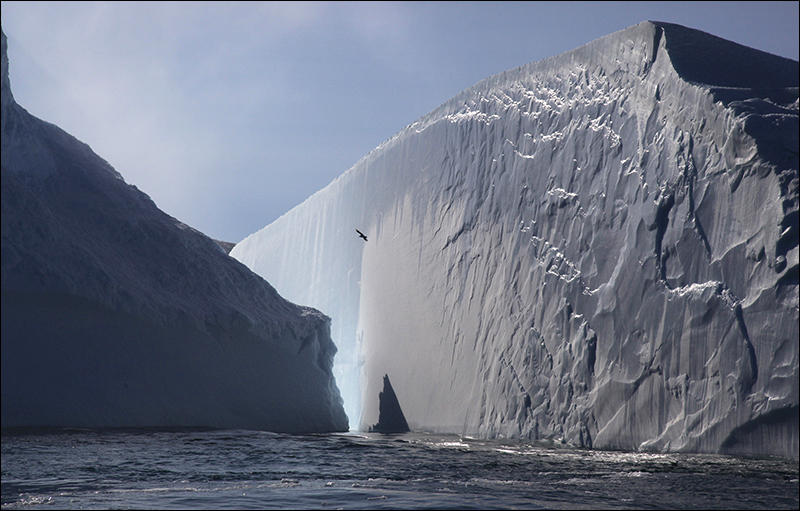 The climax of the trip was Ilulissat. It's a UNESCO World Heritage Site. This is the most active glacier in Greenland and spawns most of the icebergs that float southward on the currents of the North Atlantic. A berg from Ilulissat is thought to have sunk the Titanic. 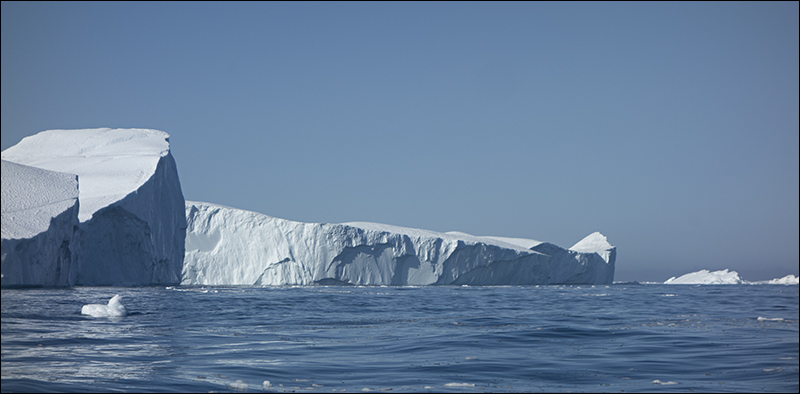 Ice bergs as far as you could see. 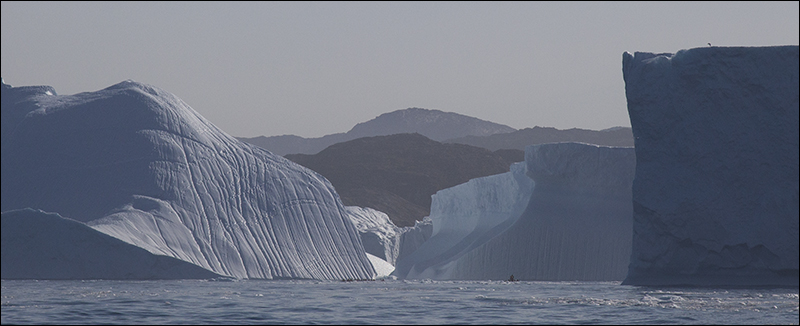 For perspective, here is one of our fellow zodiacs off in the distance. They're standing up in the zodiac to take pictures. 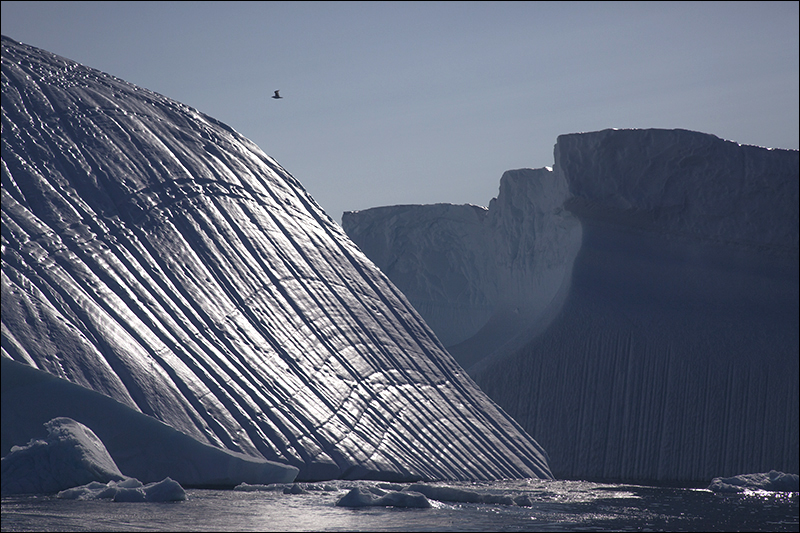 We had a gorgeous day for our trip in zodiacs out to explore the Ilulissat Ice Fjord. 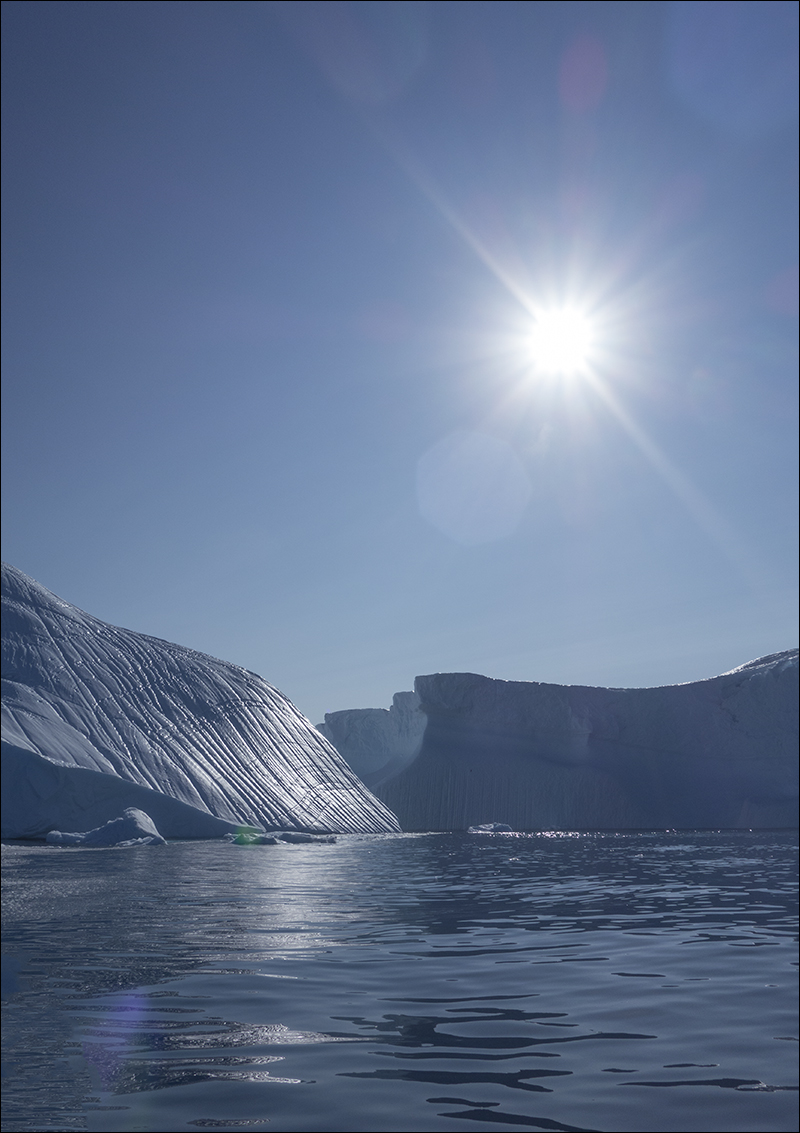 photo by Mary 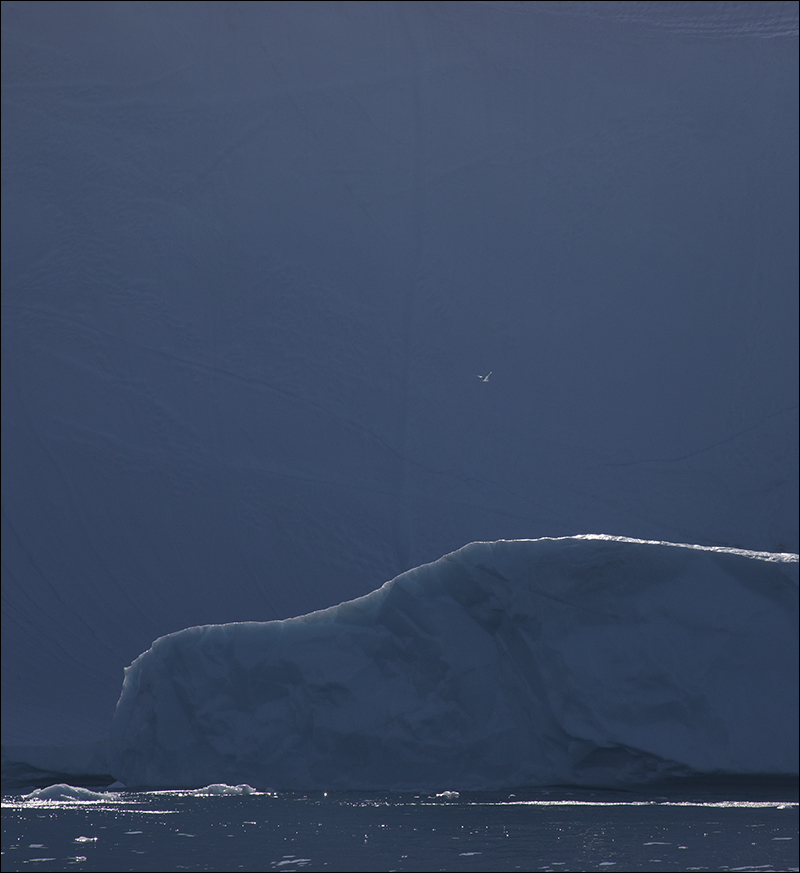 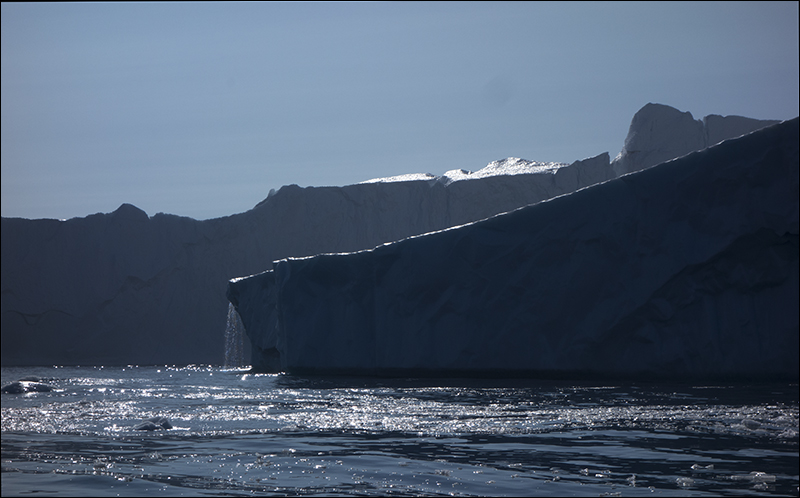 A small waterfall off one of the tabular ice bergs. photo by Mary 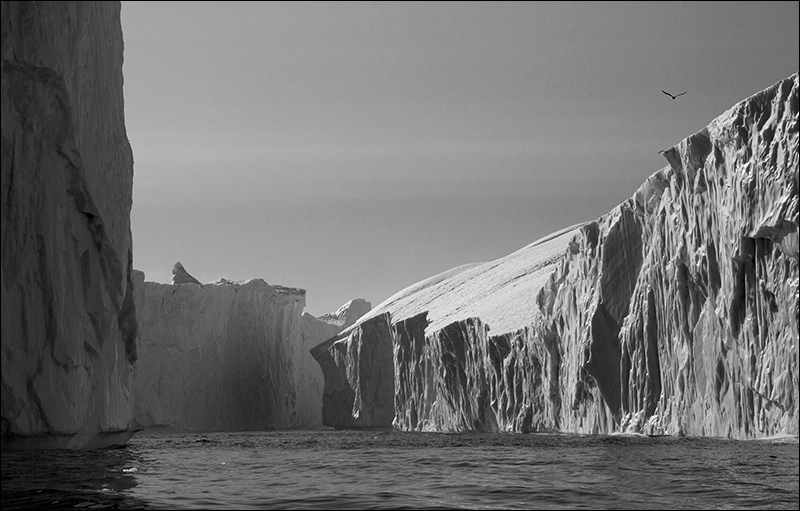 I just happened to have some black and white film! 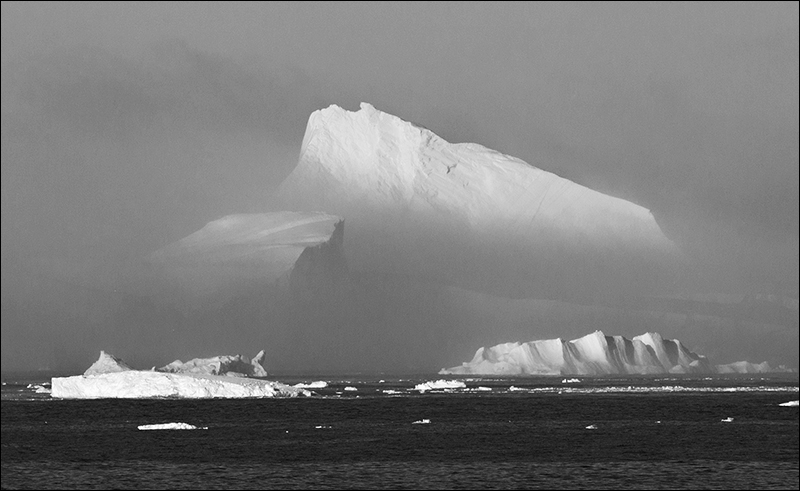 Again. 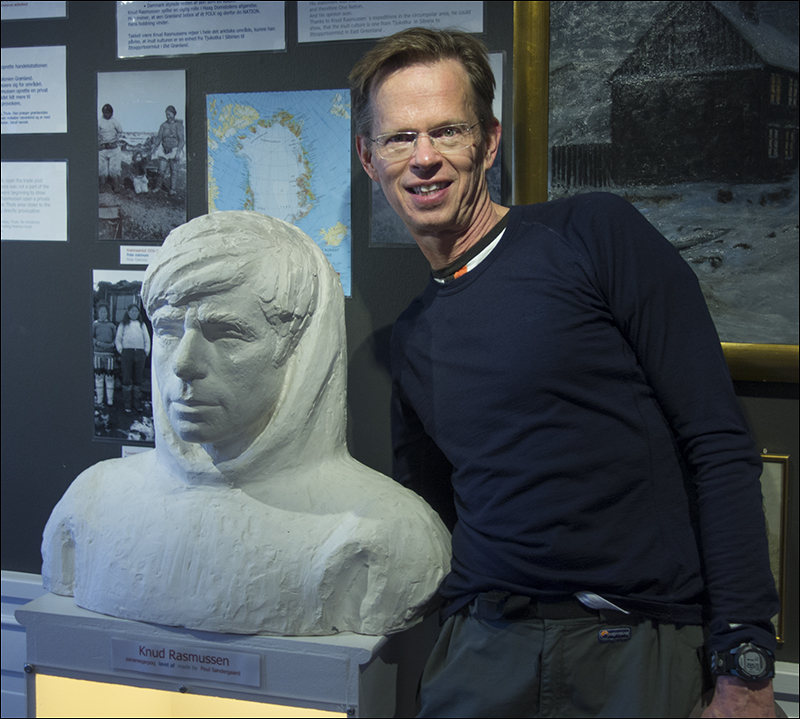 Ilullissat is the birthplace of my man, Knud Rasmussen. He is revered in Greenland. His father was a Danish Lutheran minister, is mother was Greenlander, so he epitomizes the merging of Danish and Greenlander cultures on this arctic island. Knud grew up speaking Greenlander and learning the subsistence ways of that culture, and he used that knowledge to make unprecedented travels throughout the Arctic. photo by Mary 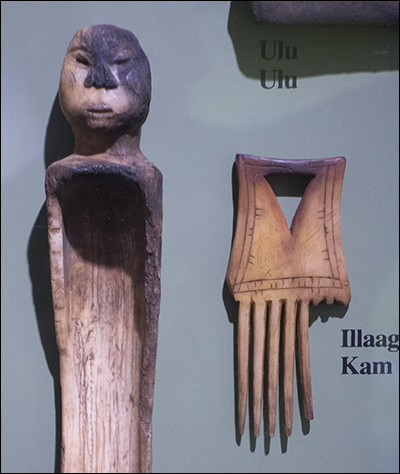 The Greenlander culture goes back at least 10,000 years. These are pre-contact items in the Ilulissat Museum. photo by Mary 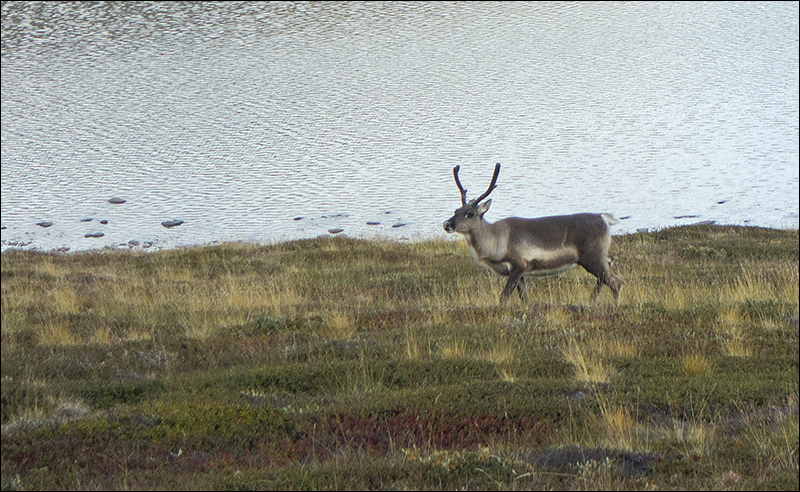 In Kangerlusuaq we traveled by road to the Greenland Icecap and along the way we saw reindeer ... photo by Mary 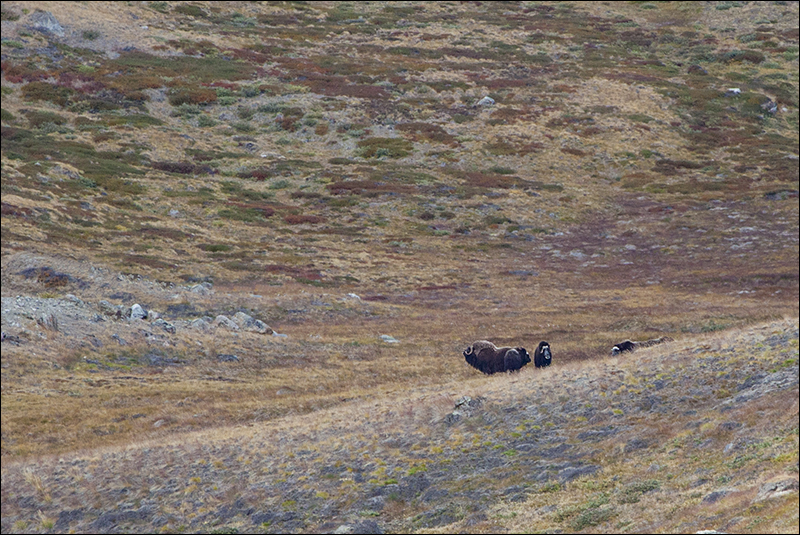 ... and musk ox. 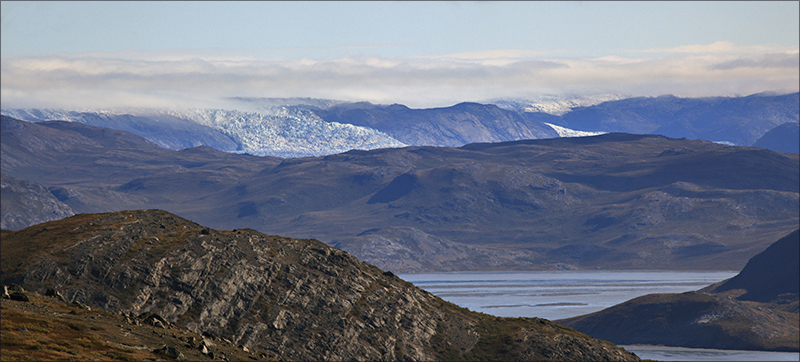 Here is our first glimpse of the icecap. 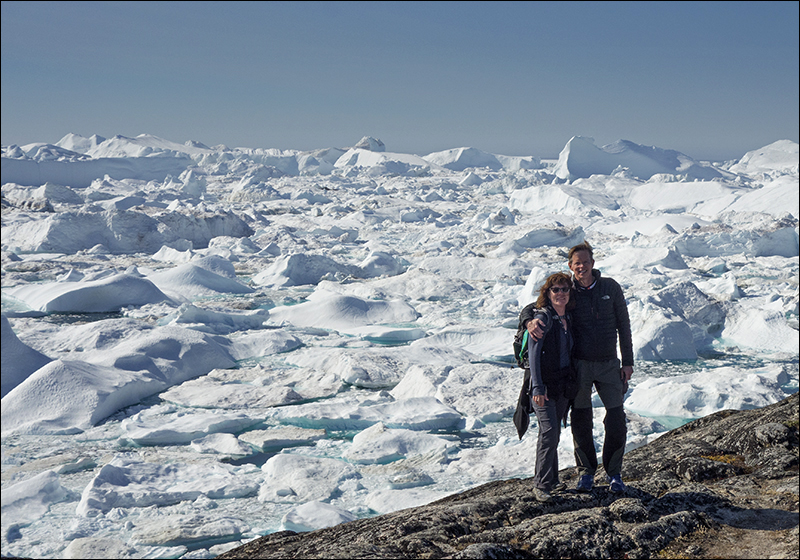 Mary and me back at the Ilulissat icefjord. This picture is deceptive because we're actually high up on a hillside above the fjord, about 100 meters above the water level. 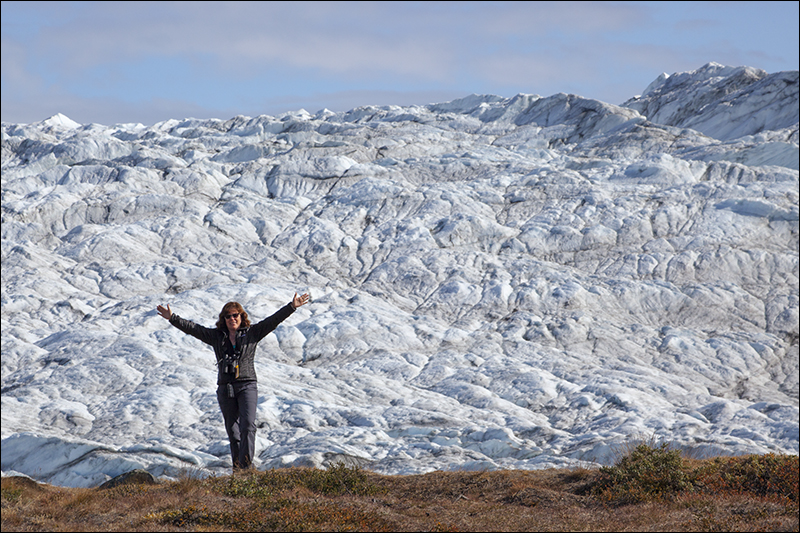 Mary and the Greenland Icecap. TOP |
|